Ditapis dengan
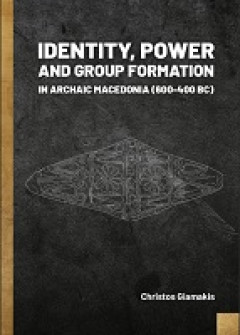
E-book Identity, Power and Group Formation: in Archaic Macedonia (600-400 BC)
The ?rst ever large-scale synthesis on identity and social dynamics across archaic Macedonia (600-400 BC), Christos Giamakis’s book provides a detailed narrative exploring the role of power as displayed through material culture in the formation of group identities across the region. Giamakis focuses on data from nine cemeteries in the region combining multiple datasets including grave goods, …
- Edisi
- -
- ISBN/ISSN
- 9789464280784
- Deskripsi Fisik
- 238 halaman, ilus.
- Judul Seri
- -
- No. Panggil
- 930.1 GIA i
E-book The Circular Archtype in Microcosm : The Carved Stone Balls of Late Ne…
In 2015, in the final year of a six year part-time degree in archaeology at Leicester University, I chose Neolithic Carved Stone Balls (CSBs) as the subject for my final dissertation. In doing so I found it necessary to create both a Master Database and Photographic Database, as despite them being regarded by many as one of …
- Edisi
- -
- ISBN/ISSN
- 9781803271279
- Deskripsi Fisik
- 384 hlm
- Judul Seri
- -
- No. Panggil
- 930.1 STE t
E-book Tayma II : Catalogue of the Inscriptions Discovered in the Saudi-Germa…
he town of Taym?? amid the deserts of North Arabia is famous for having been the residence of the last king of the Neo-Babylonian Empire, Nabonidus (556–539 BCE), for approximately ten years from 553 to 543 BCE.1 Despite its important position as a trading centre, situated within the network of caravan roads running from South Arabia to the north into the Levant and to the east into Babylonia…
- Edisi
- -
- ISBN/ISSN
- 9781789698770
- Deskripsi Fisik
- 273 hlm
- Judul Seri
- -
- No. Panggil
- 930.1 SCH t
E-book Principles of Decoration in the Roman World
A visual structure and hierarchy is created by the spatial-architectural location of the decorative elements and their relationship to one another. Traditional research drawing on Immanuel Kant’s reflections on aesthetics describes such hierarchies by referring to a particular notion of ‘image’ and ‘ornament’: the image becomes the central (research) object, the ornament…
- Edisi
- -
- ISBN/ISSN
- 9783110732139
- Deskripsi Fisik
- 205 hlm
- Judul Seri
- -
- No. Panggil
- 930.1 DAR p
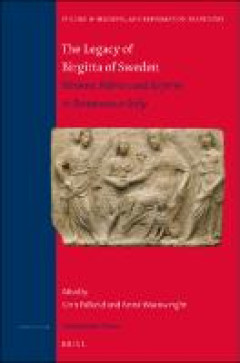
E-book The Legacy of Birgitta of Sweden: Women, Politics, and Reform in Renai…
Saint Birgitta of Sweden (d. 1373), one of the most famous visionary women of the late Middle Ages, lived in Rome for the last 23 years of her life. Much of her extensive literary work was penned there. Her Celestial Revelations circulated widely from the late 14th century to the 17th century, copied in Italian scriptoria, translated into vernacular, and printed in several Latin and Italian edi…
- Edisi
- -
- ISBN/ISSN
- 9789004540040
- Deskripsi Fisik
- 378 halaman, ilus.
- Judul Seri
- -
- No. Panggil
- 930.1 FAL t
E-book Architecture and Asceticism: Cultural interaction between Syria and Ge…
In Architecture and Asceticism Loosley Leeming explores the links between Syria and Georgia in late antiquity. The book takes an inter-disciplinary approach and examines the question from archaeological, art historical, historical, literary and theological viewpoints. Readership: This work is aimed at specialists in Oriental and Eastern Christianity, Late Antique material culture, Syrian (and S…
- Edisi
- -
- ISBN/ISSN
- 9789004375314
- Deskripsi Fisik
- 255 hlm
- Judul Seri
- -
- No. Panggil
- 930.1 LEE a
E-book Growing Up in the Cis-Baikal Region of Siberia Russia
The Cis-Baikal is a vast region in Northeast Asia encompassing the western part of Lake Baikal in Siberia, Russia. During the middle Holocene (c.8200–3700 cal BP1), the Cis-Baikal was inhabited by many individuals who left behind a rich archaeological and mortuary record. Archaeological research in the Cis-Baikal has been ongoing since the 19th century …
- Edisi
- -
- ISBN/ISSN
- 9781803274942
- Deskripsi Fisik
- 256 hlm
- Judul Seri
- -
- No. Panggil
- 930.1 VAN g
E-book Designs on Pots : Ban Chiang and the Politics of Heritage in Thailand
I identify as an anthropologist, with a slight undercoating of archaeology, which was triggered f ifty years ago by seeing pots with unusual designs in a Bangkok market. In a grade seven project on choosing a career, I wrote that I wanted to be an archaeologist; much later I learned that anthropology was the best route to that career. I received my BA in anthropology from the University of Toro…
- Edisi
- -
- ISBN/ISSN
- 9789463728461
- Deskripsi Fisik
- 207 hlm
- Judul Seri
- -
- No. Panggil
- 930.1593 VAN d
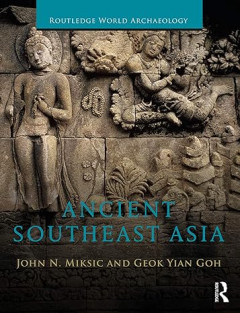
E-book Ancient Southeast Asia (Routledge World Archaeology)
Ancient Southeast Asia provides readers with a much needed synthesis of the latest discoveries and research in the archaeology of the region, presenting the evolution of complex societies in Southeast Asia from the protohistoric period, beginning around 500BC, to the arrival of British and Dutch colonists in 1600. Well-illustrated throughout, this comprehensive account explores the factors whic…
- Edisi
- -
- ISBN/ISSN
- 9780415735544
- Deskripsi Fisik
- 654 halaman, ilus.
- Judul Seri
- -
- No. Panggil
- 930.1 MIK a
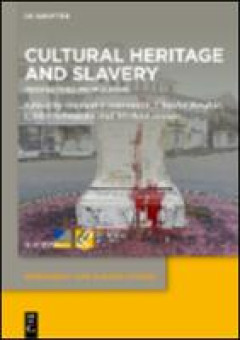
E-book Cultural Heritage and Slavery: Perspectives from Europe
In the recent cultural heritage boom, community-based and national identity projects are intertwined with interest in cultural tourism and sites of the memory of enslavement. Questions of historical guilt and present responsibility have become a source of social conflict, particularly in multicultural societies with an enslaving past. This became apparent in the context of the Black Lives Matte…
- Edisi
- -
- ISBN/ISSN
- 9783111331492
- Deskripsi Fisik
- 352 halaman
- Judul Seri
- -
- No. Panggil
- 930.1 CON c
E-book The Crisis of the 14th Century
A combination of all three aspects is also feasible. For example, the cult of a protective saint against the plague spreads in a European region hardly affected by the Black Death, even as the pandemic itself was sparked in part by changing precipitation pat-terns in Central Asia.Perhaps it is more useful to think of the multi-level impacts of a meteorological extreme event on a s…
- Edisi
- -
- ISBN/ISSN
- 9783110660784
- Deskripsi Fisik
- 307 hlm
- Judul Seri
- -
- No. Panggil
- 930.1 BAU t

E-book How Divine Images Became Art: Essays on the Rediscovery, Study and Col…
How Divine Images Became Art tells the story of the parallel ‘discovery’ of Russian medieval art and of the Italian ‘primitives’ at the beginning of the twentieth century. While these two developments are well-known, they are usually studied in isolation. Tarasov’s study has the great merit of showing the connection between the art world in Russia and the West, and its impact in the c…
- Edisi
- -
- ISBN/ISSN
- 9781805111580
- Deskripsi Fisik
- 230 halaman
- Judul Seri
- -
- No. Panggil
- 930.1 ROC h
E-book Picturing Royal Charisma : Kings and Rulers in the Near East from 3000…
From the earliest Near Eastern urban civilizations to modern times, rulers and their retinues have disseminated ideological information with regard to the legitimacy of their status, their obligations, and their rights. The visual expressions of these royal statements were the subject of our research group, under the auspices of the Mandel Scholion In…
- Edisi
- -
- ISBN/ISSN
- 9781803271613
- Deskripsi Fisik
- 152 hlm
- Judul Seri
- -
- No. Panggil
- 930.1 DAV p
E-book Gematon: Living and Dying in a Kushite Town on the Nile : The Pottery
The pottery published in this volume was excavated and recorded between 1997 and 2018. During the first seasons only diagnostic sherds (rims, bases, handles, decorated pottery and unusual fabrics) were recorded, ignoring the non-diagnostic body sherds for the sake of keeping up with the quantity of pottery excavated. This concerns only the pottery from Area B and part of…
- Edisi
- vol. III
- ISBN/ISSN
- 9781803276793
- Deskripsi Fisik
- 415 hlm
- Judul Seri
- -
- No. Panggil
- 930.1 SJO g
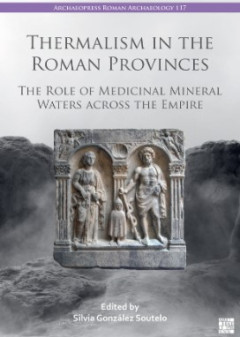
E-book Thermalism in the Roman Provinces: The Role of Medicinal Mineral Water…
Thermal establishments with mineral-medicinal waters represent a special case among Roman bath buildings, not only because of the adaptation of the space to the use of these waters for health issues, but also because of the infrastructures and engineering they developed, as well as for their function in the landscape. Thermalism in the Roman Provinces is focused on the role of thermal esta…
- Edisi
- -
- ISBN/ISSN
- 9781803277769
- Deskripsi Fisik
- 230 halaman, ilus.
- Judul Seri
- -
- No. Panggil
- 930.1 SOU t
E-book Unter Hügeln
Der Begriff ‚Transformation‘ stammt vom lateinischen Wort ‚transformare‘ ab und bedeutet, dass etwas umgewandelt, umgeformt oder umgestaltet wird (Brockhaus Enzyklopädie 2006, 311). Dabei kann es sich sowohl um einen Gegenstand in der Natur-, als auch in der Geisteswissenschaft handeln, der sich transformiert bzw. transformiert wird. Die Folgen einer Transformation sind Verän…
- Edisi
- -
- ISBN/ISSN
- 9789464280500
- Deskripsi Fisik
- 542 hlm
- Judul Seri
- -
- No. Panggil
- 930.1 SCH u
E-book Tales of Two Cities: Settlement and Suburb in Old Sarum and Salisbury
Telling the story of Old Sarum and Salisbury, from the mid-10th century to the start of the 20th, this book brings together the most up-to-date thinking on the archaeological evidence, and, through analysis of the rich documentary record, provides a fresh take on the story of this most illustrious cathedral city in the heart of southern England. Tales of Two Cities tells the story of Old Sar…
- Edisi
- -
- ISBN/ISSN
- 9781803277608
- Deskripsi Fisik
- 360 halaman, ilus.
- Judul Seri
- -
- No. Panggil
- 930.1 COO t
E-book A Greek State in Formation : The Origins of Mycenaean Pylos
The Bronze Age in Greece began around 3100 B.C. with the first bronze work-ing for the manufacture of tools and weapons (see map 1). Already in the Neo-lithic, there had been limited use of copper, the essential ingredient of bronze, while stone tools were still essential for some purposes in the Bronze Age. Copper typically was alloyed with tin to produce bronze, but…
- Edisi
- -
- ISBN/ISSN
- 9780520387256
- Deskripsi Fisik
- 2022
- Judul Seri
- -
- No. Panggil
- 930.1495 DAV a
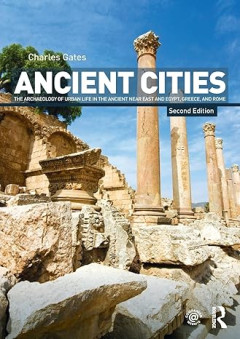
E-book Ancient Cities: The Archaeology of Urban Life in The Ancient Near East…
Ancient Cities surveys the cities of the Ancient Near East, Egypt, and the Greek and Roman worlds from the perspectives of archaeology and architectural history, bringing to life the physical world of ancient city dwellers by concentrating on evidence recovered from archaeological excavations. Urban form is the focus: the physical appearance and overall plans of the cities, their architecture a…
- Edisi
- -
- ISBN/ISSN
- 9780203830574
- Deskripsi Fisik
- 503 halaman, ilus.
- Judul Seri
- -
- No. Panggil
- 930.1 GAT a
E-book Current Research in Egyptology 2023: Proceedings of the Twenty-Third A…
Collecting 22 selected papers from the twenty-third Current Research in Egyptology conference, topics include language and literature, archaeology and material culture, society and religion, archival research, intercultural relations, reports on archaeological excavations and methodological issues, regarding all periods of Ancient Egypt. The twenty-third Current Research in Egyptology confer…
- Edisi
- -
- ISBN/ISSN
- 9781803278223
- Deskripsi Fisik
- 382 halaman, ilus.
- Judul Seri
- -
- No. Panggil
- 930.1 UNI c
E-book In Pursuit of Visibility: Essays in Archaeology, Ethnography, and Text…
In Pursuit of Visibility honors the distinguished career of a scholar of Canaan and ancient Israel, Beth Alpert Nakhai. In fifteen diverse essays, Professor Nakhai’s students and colleagues celebrate her important contributions to the field of Near Eastern Archaeology, including her research into gender, household, and cult in the Bronze and Iron Age southern Levant, and her tireless efforts …
- Edisi
- -
- ISBN/ISSN
- 9781803272320
- Deskripsi Fisik
- 212 halaman, ilus.
- Judul Seri
- -
- No. Panggil
- 930.1 EBE i
E-book How to Read Ancient Texts: With a Focus on Select Phoenician Inscripti…
How to Read Ancient Texts foregrounds the principles of interpretation that scholars employ when reading ancient inscriptions. In order to better come to grips with Canaanite, such as Phoenician, inscriptions, we need to first understand how people wrote and read texts in the ancient Mediterranean world, including that of the Greeks and Romans. The use of continual script and lack of punctuatio…
- Edisi
- -
- ISBN/ISSN
- -
- Deskripsi Fisik
- 140 halaman
- Judul Seri
- -
- No. Panggil
- 930.1 FRE h
E-book The Prehistoric Maritime Frontier of Southeast China : Indigenous Bai …
This book presents multidisciplinary research on the cultural history, ethnic con-nectivity, and oceanic transportation of the ancient indigenousBai Yue(??) in themaritime region of southeast China and Southeast Asia. It is compiled with anumber of different theses which have been successively published in Chinesejournals in the last 20 years focusing on the indigenousBai Yueculture duringpreh…
- Edisi
- -
- ISBN/ISSN
- 9789811640797
- Deskripsi Fisik
- 275 hlm
- Judul Seri
- -
- No. Panggil
- 930.1 CHU t

E-book Perspectives on the "Collapse" of Angkor and the Khmer Empire (Chapter…
The Angkorian World explores the history of Southeast Asia’s largest ancient state from the first to mid-second millennium CE. Chapters by leading scholars combine evidence from archaeology, texts, and the natural sciences to introduce the Angkorian state, describe its structure, and explain its persistence over more than six centuries. Comprehensive and accessible, this book will be an indis…
- Edisi
- -
- ISBN/ISSN
- 9780815355953
- Deskripsi Fisik
- 14 halaman
- Judul Seri
- -
- No. Panggil
- 930.1 EVA p
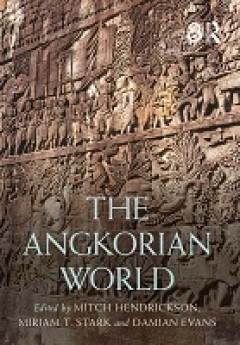
E-book Mainland Southeast Asia After Angkor: On the Legacies of Jayavarman VI…
This chapter will look beyond Cambodia as we know it today in geographic terms, and beyond the early 13th century, to highlight legacies of Angkor beyond Angkor on the Southeast Asian mainland (see Figure 32.1). To begin this exploration, allow me to point out the discreetly deceptive premises of this chapter’s title: that we all, author and readers alike, share established understandings of …
- Edisi
- -
- ISBN/ISSN
- 9780815355953
- Deskripsi Fisik
- 19 halaman
- Judul Seri
- -
- No. Panggil
- 930.1 THO m

E-book Antiquities: What Everyone Needs to Know®
The destruction of ancient monuments and artworks by the Taliban in Afghanistan and the Islamic State in Iraq and Syria has shocked observers worldwide. Yet iconoclastic erasures of the past date back at least to the mid-1300s BCE, during the Amarna Period of ancient Egypt's 18th dynasty. Far more damage to the past has been inflicted by natural disasters, looters, and public works. Art hist…
- Edisi
- -
- ISBN/ISSN
- 9780190614928
- Deskripsi Fisik
- 200 halaman
- Judul Seri
- -
- No. Panggil
- 930.1 AND a
E-book Modelling the Logistics of Mantzikert
The Battle of Mantzikert had profound consequences for both Byzantine and Turkish history, yet the historical sources for this campaign contain significant gaps. This book presents the results of a project that seeks to demonstrate the important role computer simulation can play in the analysis of pre-modern military logistics.
- Edisi
- -
- ISBN/ISSN
- 9781803278001
- Deskripsi Fisik
- 160 pages
- Judul Seri
- -
- No. Panggil
- 930.1 MUR m
E-book Frontiers of the Roman Empire: The Lower Danube Limes in Bulgaria
The inextricability of the connection between the Roman limes and the lands it ran through is easily observed and perfectly illustrated in Bulgaria. For a considerable distance it follows the Danube; both a major natural obstacle and at the same time a convenient communication route, it was easily defendable and facilitated control of trade routes.
- Edisi
- -
- ISBN/ISSN
- 9781803277806
- Deskripsi Fisik
- 96 pages
- Judul Seri
- -
- No. Panggil
- 930.1 DYC f
Ebook Gandharan Art and the Classical World: A Short Introduction
This book offers an introduction to Gandharan art and the mystery of its relationship with the Graeco-Roman world of the Mediterranean. It presents an accessible explanation of the ancient and modern contexts of Gandharan art, the state of scholarship on the subject, and guidance for further, in-depth study.
- Edisi
- -
- ISBN/ISSN
- 9781803276953
- Deskripsi Fisik
- 94 halaman, ilus.
- Judul Seri
- -
- No. Panggil
- 930.1

E-book The Future of the Bamiyan Buddha Statues : Heritage Reconstruction in …
Acts such as iconoclasm and biblioclasm have a long history in the world, whether committed during wartime, revolutions or times of repression, but the early twenty-first century has seen a new wave of deliberate destruction often publicly broadcast by the perpetrators. Recent prominent examples include the destruction of 16 tombs in Timbuktu, Mali, and damage to several World Heritage Sites in…
- Edisi
- -
- ISBN/ISSN
- 9783030513160
- Deskripsi Fisik
- 368 hlm
- Judul Seri
- -
- No. Panggil
- 930.1 NAG t

E-book Virtual Heritage : A Guide
While virtual heritage was initially described as a fusion of virtual reality (VR) technology with cultural heritage content (Addison 2001; Roussou 2002), as VR keeps changing, preservation of the content becomes increasingly problematic. Virtual heritage has been a (sometimes) successful communication medium but seldom has it succeeded as a preservation medium (Champion 2016).Even the term …
- Edisi
- -
- ISBN/ISSN
- 9781914481017
- Deskripsi Fisik
- 153 hlm
- Judul Seri
- -
- No. Panggil
- 930.1 MOL v
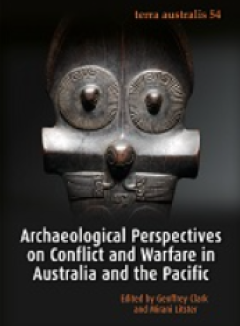
E-book Archaeological Perspectives on Conflict and Warfare in Australia and t…
Archaeological investigation of places marked by violence such as Ruapekapeka Pa? in northern New Zealand, where both European and Maori combatants died during significant military operations, has contributed to a national day of remembrance (R? Maumahara) to acknowledge that while colonial settlement played a significant role in modern nation-building, so did intrusion…
- Edisi
- -
- ISBN/ISSN
- 9781760464899
- Deskripsi Fisik
- 280 hlm
- Judul Seri
- -
- No. Panggil
- 930.194 AND a

E-book New Horizons for Asian Museums and Museology
In FY1994, Japan International Cooperation Agency (JICA) decided to hold a 6-month course called “Museum Management Technology (Collection, Conservation and Exhibition),” in which a then professor of Minpaku, Tsuneyuki Morita played a central role. Minpaku as an institution was commissioned to provide a 2-week “International Cooperation Seminar on Museology” as pa…
- Edisi
- -
- ISBN/ISSN
- 9789811008863
- Deskripsi Fisik
- 198 hlm
- Judul Seri
- -
- No. Panggil
- 930.1 SON n
E-book The Elemental Analysis of Glass Beads : Technology, Chronology and Exc…
Glass bead studies, using increasingly sophisticated methods, have become important in examining archaeological questions related to technology, chronology, and exchange in the ancient world. In this introductory chapter, the goal is to provide a context for the case studies presented in this volume, within the broader field of glass bead studies. For that purpose, we briefly review th…
- Edisi
- -
- ISBN/ISSN
- 9789461664655
- Deskripsi Fisik
- 393 hlm
- Judul Seri
- -
- No. Panggil
- 930.1 DUS t

E-book Between the 3rd and 2nd Millennia BC : Exploring Cultural Diversity an…
It is generally agreed that during the 3rd millennium BC (Chalcolithic) and the 2nd millennium BC (Bronze Age) complex transformations of the social dynamics within the diverse communities inhabiting the different regions of Europe occurred. This book intends to revisit such consensus by highlighting how researchers explain these transformations a…
- Edisi
- -
- ISBN/ISSN
- 9781789699234
- Deskripsi Fisik
- 157 hlm
- Judul Seri
- -
- No. Panggil
- 930.1 LOP b
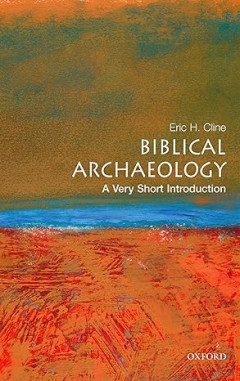
E-book Biblical Archaeology: A Very Short Introduction
Public interest in biblical archaeology is at an all-time high, as television documentaries pull in millions of viewers to watch shows on the Exodus, the Ark of the Covenant, and the so-called Lost Tomb of Jesus. Important discoveries with relevance to the Bible are made virtually every year--during 2007 and 2008 alone researchers announced at least seven major discoveries in Israel, five of th…
- Edisi
- -
- ISBN/ISSN
- 9780195342635
- Deskripsi Fisik
- 169 halaman
- Judul Seri
- -
- No. Panggil
- 220 CLI b
E-book Plant Food Processing Tools at Early Neolithic Göbekli Tepe
Functional analyses are the focus of this study. They were conducted partly using classical methods of use-wear analysis like macroscopical and microscopical optical analyses. The use of tactile analyses on the other hand is new. Also new are methods to differentiate between products of cereal processing and meals made of cereals, and quantification methods of wear.…
- Edisi
- -
- ISBN/ISSN
- 9781803270937
- Deskripsi Fisik
- -
- Judul Seri
- -
- No. Panggil
- 930.1 DIE p
E-book Pits and Boots : Excavation of Medieval and Post-medieval Backlands un…
The archaeological works at the Bon Accord Centre, Aberdeen, have identified the changing nature of this area of the medieval and post-medieval city at the junction of the two major thoroughfares of Upperkirkgate and Gallowgate. In the earliest centuries of the medieval burgh’s existence, the site formed part of an industrial quarter, periphe…
- Edisi
- -
- ISBN/ISSN
- 9781789694888
- Deskripsi Fisik
- 369 hlm
- Judul Seri
- -
- No. Panggil
- 930.1 ROY p
E-book Death Revisited : The Excavation of Three Bronze Age Barrows and Surro…
Barrows are the most common prehistoric monuments that can still be found in the European landscape today. Once erected as burial markers during prehistory, burial mounds have since served as important anchors in the landscape. Burial mounds built in the 3rd millennium BC were sometimes used to bury the dead until the 1st millennium BC (Bourgeois 2013; Theunissen 199…
- Edisi
- -
- ISBN/ISSN
- 9789088905827
- Deskripsi Fisik
- 190 hlm
- Judul Seri
- -
- No. Panggil
- 930.1 BOU d
E-book Double-Sided Antler and Bone Combs in Late Roman Britain
Double-Sided Antler and Bone Combs in Late Roman Britain offers the first detailed study and catalogue of a comb type that represents a new technology introduced into Britain towards the end of the 4th century AD and a major signifier of the late fourth- to fifth-century transition. Their end-plates were worked into a variety of decorative profiles, some clearly zoomorphic. Over time this decor…
- Edisi
- -
- ISBN/ISSN
- 9781803276458
- Deskripsi Fisik
- 148 halaman, ilus.
- Judul Seri
- -
- No. Panggil
- 930.1 CRU d
E-book Travelling the Korosko Road : Archaeological Exploration in Sudan’s …
We wanted to have this experience to assess whether our hypotheses were well founded. Hassan, an old camel driver of few words but who knew all the “secrets” of a desert journey, served as our guide.From the expedition diary: 12 February 1990: “Since a few hours, we have been travelling on our teetering rides across an immense stony plain towards Jebel Maqran, a tiny outcrop tha…
- Edisi
- -
- ISBN/ISSN
- 9781789698046
- Deskripsi Fisik
- 251 hlm
- Judul Seri
- -
- No. Panggil
- 930.1624 CAS t
E-book Early Settlers of the Insular Caribbean: Dearchaizing the Archaic
This volume is a result of the New Insights into the Archaic of the Circum-Caribbeansession that we chaired at the 81st Annual Meeting of the Society for American Archaeology in Orlando, Florida, in April 2016. The session was organized in the context of the Island Networks project supported by the Netherlands Organisation for Scientific Research (NWO-gr. nr. …
- Edisi
- -
- ISBN/ISSN
- 9789088907821
- Deskripsi Fisik
- 342 hlm
- Judul Seri
- -
- No. Panggil
- 930.1 ANT e
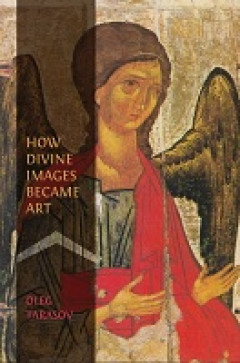
E-book How Divine Images Became Art: Essays on the Rediscovery, Study and Col…
How Divine Images Became Art tells the story of the parallel ‘discovery’ of Russian medieval art and of the Italian ‘primitives’ at the beginning of the twentieth century. While these two developments are well-known, they are usually studied in isolation. Tarasov’s study has the great merit of showing the connection between the art world in Russia and the West, and its impact in the c…
- Edisi
- -
- ISBN/ISSN
- 9781805111580
- Deskripsi Fisik
- 230 halaman
- Judul Seri
- -
- No. Panggil
- 909.07 ROC h
E-book Apotropaia and Phylakteria: Confronting Evil in Ancient Greece
The belief in the existence of evil forces was part of ancient everyday life and a phenomenon deeply embedded in popular thought of the Greek world. Stemming from a conference held in Athens in June 2021, this volume addresses the apotropaia and phylakteria from different perspectives: via literary sources, archaeological material, and iconography.
- Edisi
- -
- ISBN/ISSN
- 9781803277509
- Deskripsi Fisik
- 280 halaman, ilus.
- Judul Seri
- -
- No. Panggil
- 930.1 SPA a
E-book Environment and Settlement: Orland 600 BC - AD 1250 : Archaeological E…
In World War II, during the German occupation of Norway (AD 1940 – 1945), the German occu-pational forces established an airfield in the central parts of Ørland. The main part of the airfield was located at Vik. After the war, the Norwegian Air Force developed the airfield as a base for F16 jet fighters (Hovd 2004). In 2012, the Norwegian Parliament decided on investing in a…
- Edisi
- -
- ISBN/ISSN
- 9788202595319
- Deskripsi Fisik
- 426 hlm
- Judul Seri
- -
- No. Panggil
- 930.1 YST e
E-book Garranes : An Early Medieval Royal Site in South-West Ireland
The significance of Garranes lies partly in the date of Lisnacaheragh, believed to have been built in the fifth century AD. That is early in the history of the Irish ringfort, the origins of which remain unclear. The evidence of specialist craftworking in metal, glass and enamel from Lisnacaheragh testifies to the importance of the site. The dis…
- Edisi
- -
- ISBN/ISSN
- 9781789699197
- Deskripsi Fisik
- 402 hlm
- Judul Seri
- -
- No. Panggil
- 930.1415 OBR g
E-book Dogs, Past and Present: An Interdisciplinary Perspective
Dogs, Past and Present: An Interdisciplinary Perspective gathers contributions from scholars from a variety of disciplines to provide a comprehensive assessment of the importance of dogs through history. Over the last decades, countless studies have examined the lives of dogs and their current place in our societies as well as their crucial part in human life and history. Data and hypotheses ha…
- Edisi
- -
- ISBN/ISSN
- 9781803273556
- Deskripsi Fisik
- 502 halaman, ilus.
- Judul Seri
- -
- No. Panggil
- 930.1 FIO d
E-book The Archaeology of Iran from the Palaeolithic to the Achaemenid Empire
At the same time, archaeologists, anthropologists and historians have begun to explore the deep-time origins and early development of social inequality, articulating trends and patterns through analysis of material attributes such as size and complexity of household dwellings, access to storage space and variation in quantity and type of grave goods, on the basis that the pervasiveness of inequ…
- Edisi
- -
- ISBN/ISSN
- 9781003224129
- Deskripsi Fisik
- 653 hlm
- Judul Seri
- -
- No. Panggil
- 930.155 MAT t
E-book Megaliths of the World, Volume I
Bringing together the latest research on megalithic monuments throughout the world, 150 researchers offer 72 articles, providing a region-by region account in their specialist areas, and a summary of the current state of knowledge. Highlighting salient themes, the book is vital to anyone interested in the phenomenon of megalithic monumentality.
- Edisi
- -
- ISBN/ISSN
- 9781803273211
- Deskripsi Fisik
- 1428 halaman
- Judul Seri
- -
- No. Panggil
- 930.1 LAP m
E-book Caribbean Figure Pendants : Style and Subject Matter : Anthropomorphic…
hat we might loosely call the indigenous “religious arts” of the late prehistoric Greater Antilles – skillfully crafted, portable artifacts used in ritual practice – exist in a variety of genres in a variety of media. Some of these genres have attracted consid-erable analytical attention by specialists: dujos (ceremonial stools), cohoba stands (for receiving a hallucinogeni…
- Edisi
- -
- ISBN/ISSN
- 9789088908729
- Deskripsi Fisik
- 275 hlm
- Judul Seri
- -
- No. Panggil
- 930.1 JAM c
 Karya Umum
Karya Umum  Filsafat
Filsafat  Agama
Agama  Ilmu-ilmu Sosial
Ilmu-ilmu Sosial  Bahasa
Bahasa  Ilmu-ilmu Murni
Ilmu-ilmu Murni  Ilmu-ilmu Terapan
Ilmu-ilmu Terapan  Kesenian, Hiburan, dan Olahraga
Kesenian, Hiburan, dan Olahraga  Kesusastraan
Kesusastraan  Geografi dan Sejarah
Geografi dan Sejarah